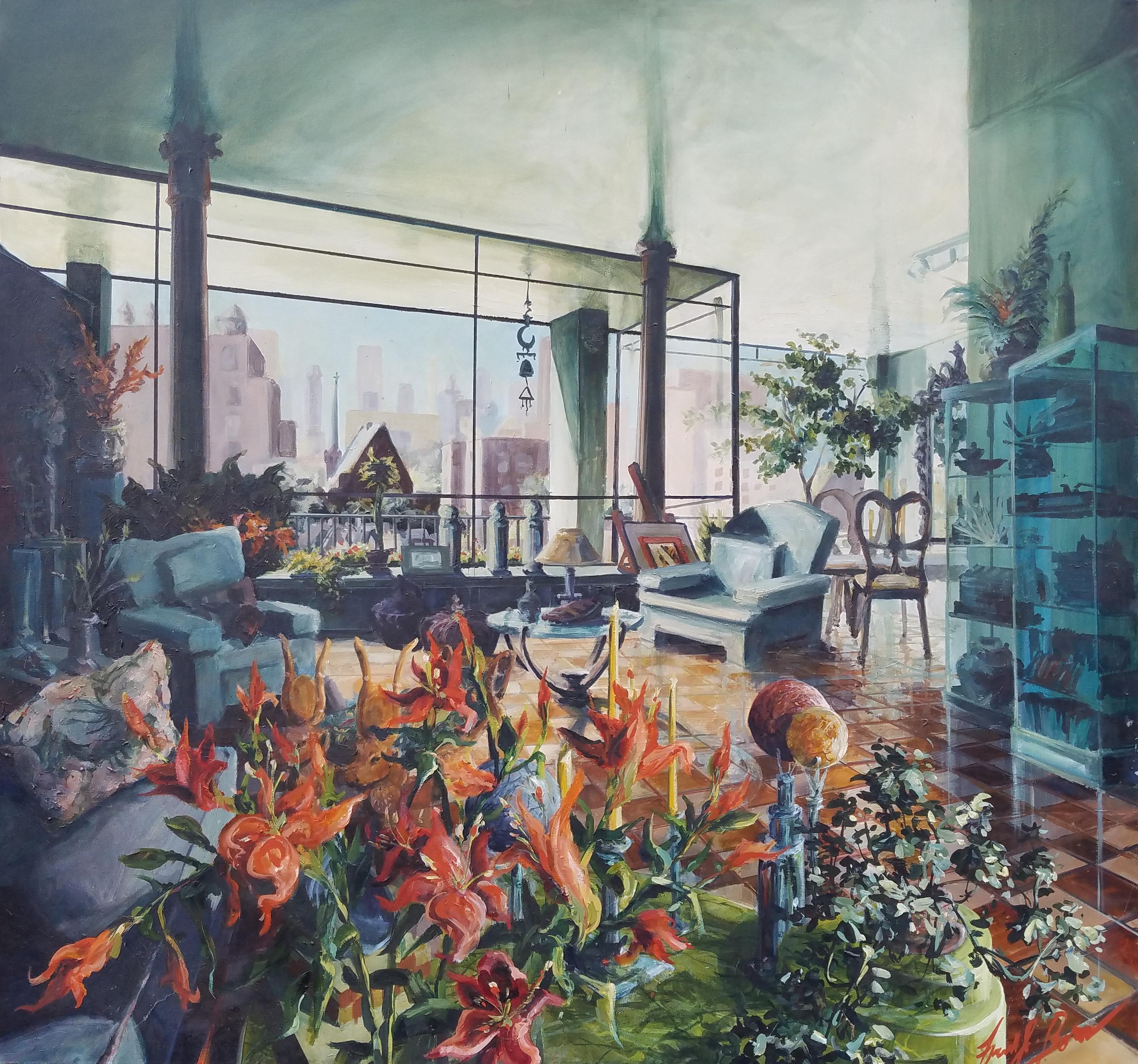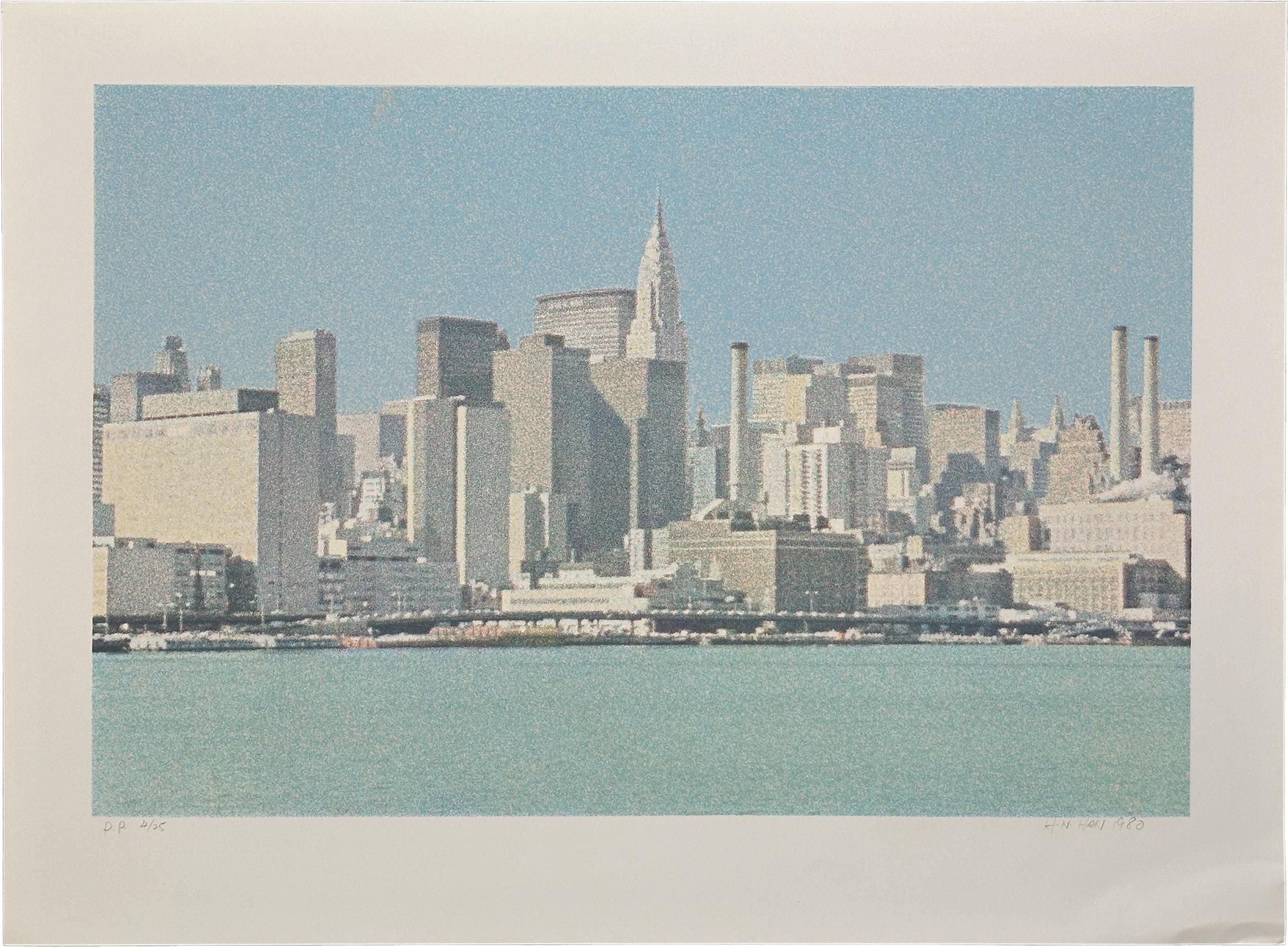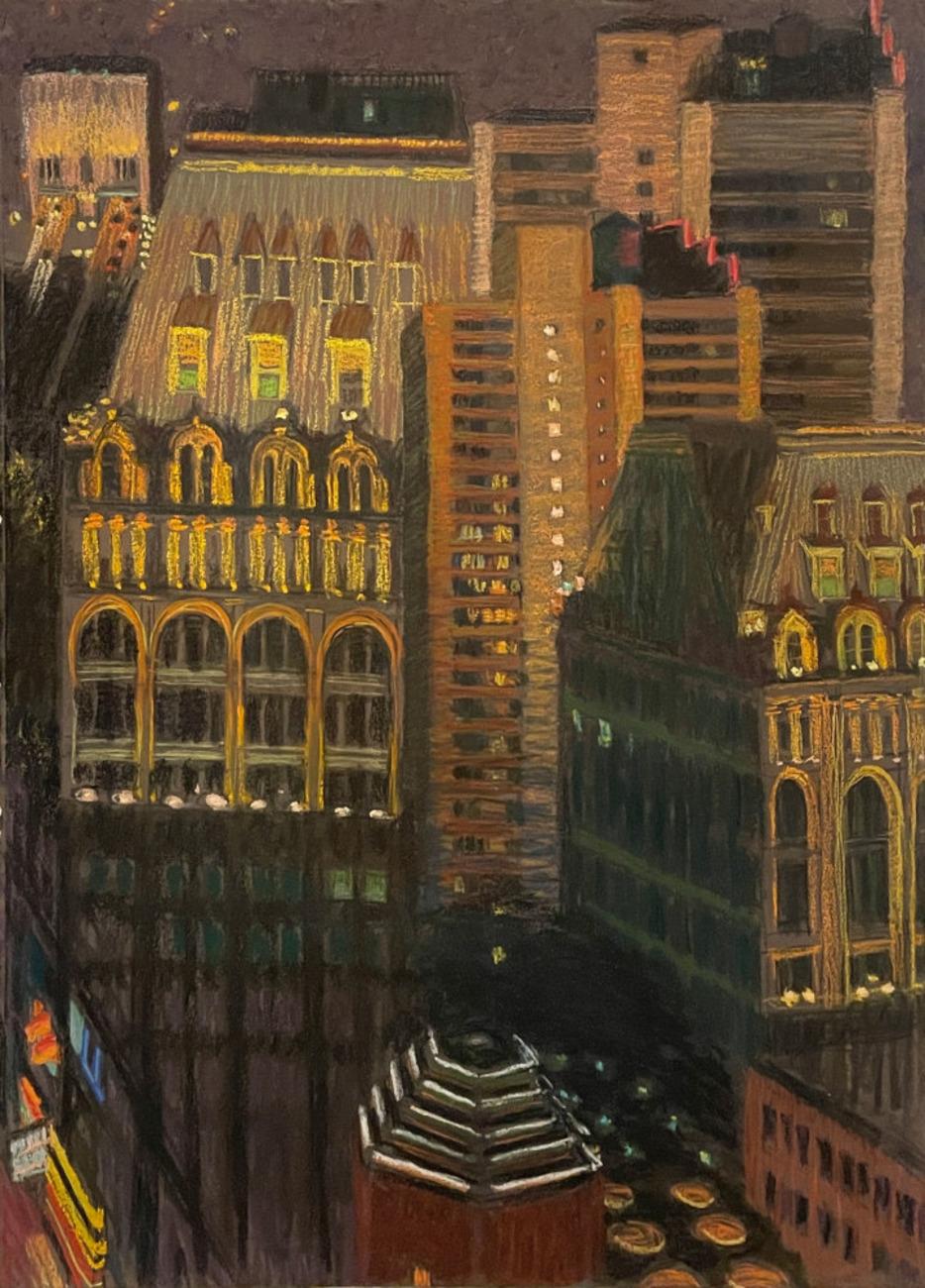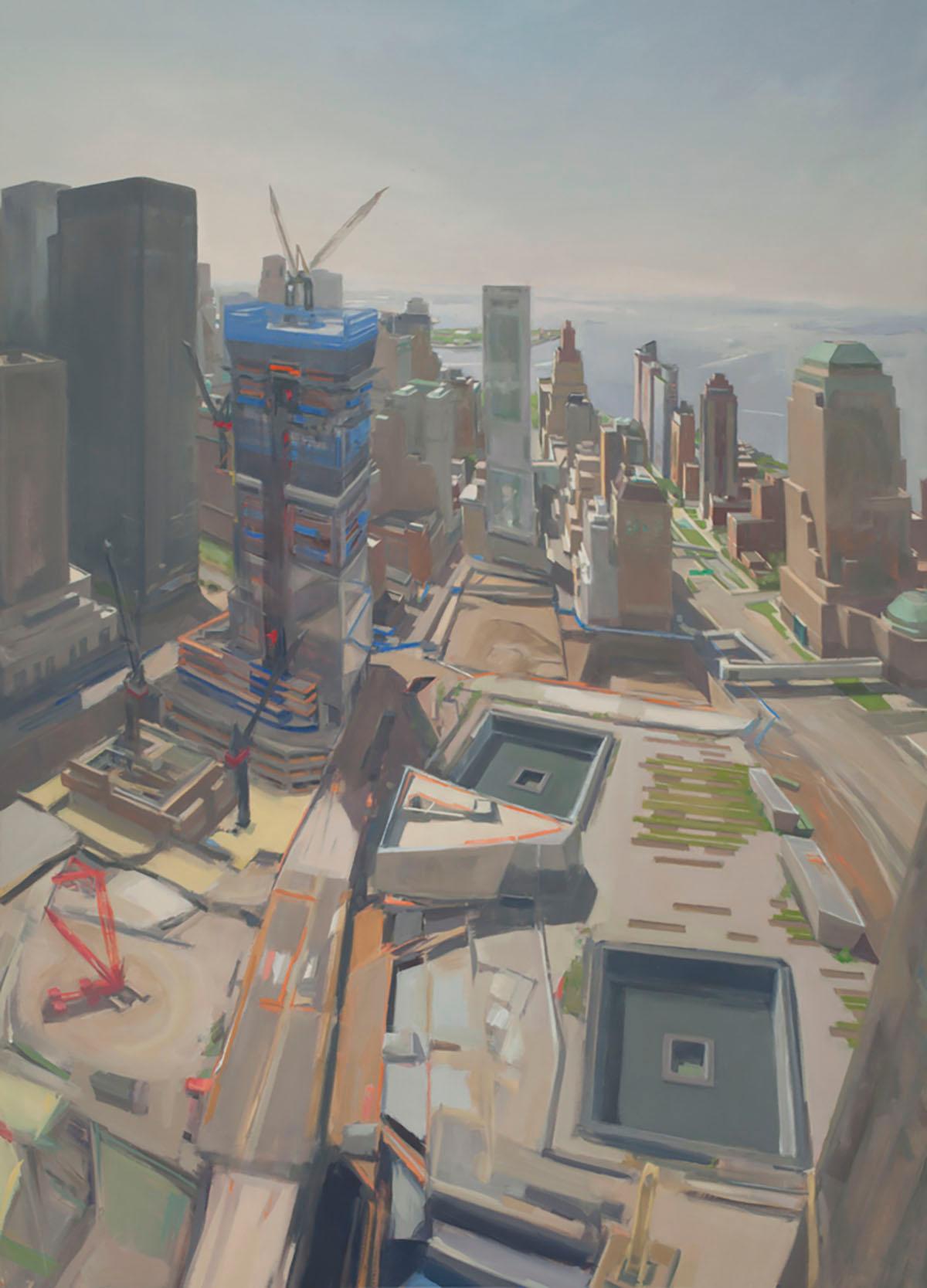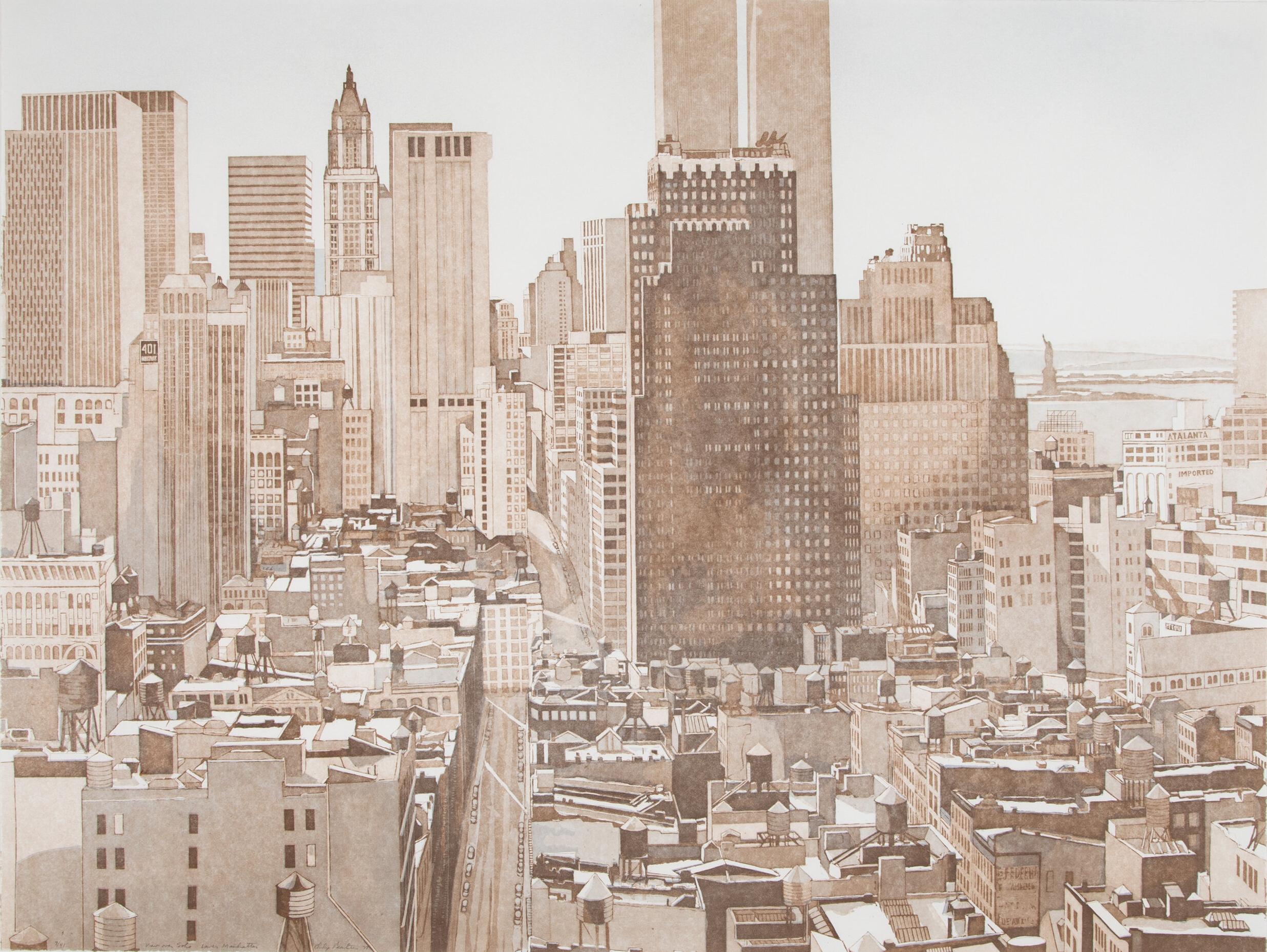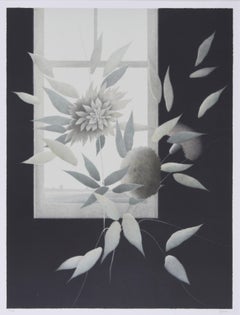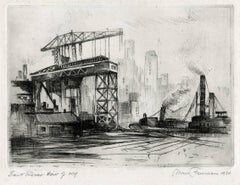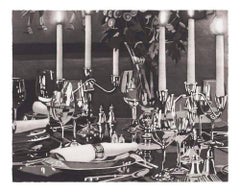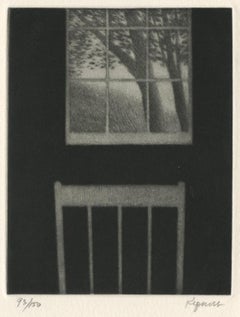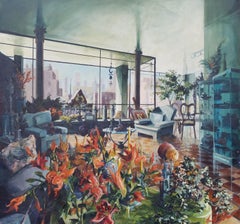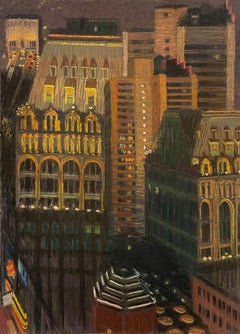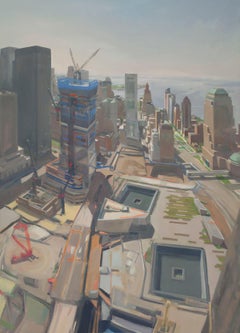Items Similar to The 21st Floor-A View of the World Trade Center in the Skyline
Want more images or videos?
Request additional images or videos from the seller
1 of 10
Joni Frankel Diskint RoseThe 21st Floor-A View of the World Trade Center in the Skylinec. 1990
c. 1990
$400
£309.38
€352.22
CA$574.34
A$627.48
CHF 328.86
MX$7,492.30
NOK 4,161.80
SEK 3,880.80
DKK 2,630.49
About the Item
The 21st Floor-A View of the World Trade Center in the Skyline
Screen print, c. 1990
Signed: Joni Frankel lower left
Edition 200 (42/200)
Signed lower left
Titled and numbered lower right
Image size: 22 1/4 x 30 1/4 inches
Sheet size: 27 ¼ X 35 inches
Condition: Excellent
Never matted or framed
Education: American University
BA, Art 1969 – 1972
Studied Fine Arts in London
- Creator:Joni Frankel Diskint Rose (1951)
- Creation Year:c. 1990
- Dimensions:Height: 22.25 in (56.52 cm)Width: 30.25 in (76.84 cm)
- Medium:
- Movement & Style:
- Period:
- Condition:
- Gallery Location:Fairlawn, OH
- Reference Number:Seller: FA118871stDibs: LU14015203722
About the Seller
5.0
Recognized Seller
These prestigious sellers are industry leaders and represent the highest echelon for item quality and design.
Gold Seller
Premium sellers maintaining a 4.3+ rating and 24-hour response times
Established in 1978
1stDibs seller since 2013
827 sales on 1stDibs
Typical response time: <1 hour
Associations
International Fine Print Dealers Association
- ShippingRetrieving quote...Shipping from: Fairlawn, OH
- Return Policy
More From This Seller
View AllStudio Flowers
By Robert Kipniss
Located in Fairlawn, OH
Studio Flowers
Lithograph, 1982
Signed lower right (see photo)
Numbered lower left
Edition: 120 (42/120) (see photo)
Condition: Mint condition
Two bits of hinge residue verso
Image s...
Category
1980s American Realist Still-life Prints
Materials
Lithograph
East River View of N.Y.
By Mark Freeman
Located in Fairlawn, OH
East River View of N.Y.
Etching, 1934
Signed, dated and titled in pencil by the artist
From a very small edition.
Brilliant impression
Condition: Excellent
Image/Plate size: 5-1/8 x...
Category
1930s American Modern Landscape Prints
Materials
Etching
Dining Room with Horse Painting
By Julia Jacquette
Located in Fairlawn, OH
Dining Room with Horse Painting
Aquatint on Hahnemuhle Copperplate paper, 2008
Signed in pencil and numbered lower left
Published by the Print Club of Cleveland, Publication No.88, 2...
Category
Early 2000s Contemporary Still-life Prints
Materials
Aquatint
Landscape with Window and Chair
By Robert Kipniss
Located in Fairlawn, OH
Landscape with Window and Chair
Mezzotint on wove paper, 2000
Signed in pencil lower right (see photo)
Edition: 150 (93/150) (see photo)
Special Presentation Print for the Print Club...
Category
Early 2000s Contemporary Interior Prints
Materials
Mezzotint
Untitled From: Gates to Times Square (20 screenprints, 2 lithographic additions)
By Chryssa Vardea-Mavromichali
Located in Fairlawn, OH
Signed in pencil
Edition 100
Printer: Styria Studio, Inc., NY, with their blindstamp
This earlier (1966) sculpture of the same title is the inspiration of the portfolio. The sculpture is in the collection of the Albright Knox Museum. The screenprints follow the neon of the sculpture.
Greek-born American sculptor Chryssa—who went by her first name professionally—died on December 23, 2013, reports Margalit Fox of the New York Times. Born in 1933 in Athens, Chryssa Vardea-Mavromichali grew up during the Nazi occupation of Greece. After studying at the Académie de la Grande Chaumière, Paris, and the California School of Fine Arts, San Francisco, she began incorporating neon into her fragmentary, text-based work. Her first solo exhibition in New York was held at the Betty Parsons Gallery in 1961, which was quickly followed by shows at the Guggenheim, New York; Leo Castelli Gallery, New York; and the Walker Art Center, Minneapolis. Her work is part of collections of major museums, including the Museum of Modern Art, New York; the Whitney Museum of American Art, New York; and the Corcoran Gallery of Art, Washington, DC.
Note: A set of Gates...
Category
1970s Abstract Abstract Prints
Materials
Screen
La Terrazza
By Jeanette Pasin-Sloan
Located in Fairlawn, OH
La Terrazza
Lithograph, 1987
Signed, titled and numbered in pencil (see photos)
Published by Kandfall Press, Chicago (their stamp verso)
Landfall drystamp recto lower left
Edition 12...
Category
1980s Photorealist Still-life Prints
Materials
Lithograph
You May Also Like
"Tuesday - 8 O'clock, " Frank Boros, View of Manhattan Skyline, New York City
Located in New York, NY
Frank J. Boros (1943 - 2017)
Tuesday - 8 O'clock
Oil on canvas
48 x 51 inches
Signed lower right
Accompanied by original purchase invoice and letter from the artist.
Provenance:
T...
Category
1990s Contemporary Landscape Paintings
Materials
Canvas, Oil
New York Skyline 1980 Cityscape Signed Limited Edition Lithograph
By Han Hsiang-ning
Located in Rochester Hills, MI
H.N. Han
Han Hsiang-Ning (Chinese b.1939)
New York Skyline
1980
From the Cityscape Portfolio
Pencil signed, dated and marked PP 4/25 in the margin
Color lithograph on Somerset.
Pape...
Category
1980s Photorealist Landscape Prints
Materials
Lithograph
"From World Trade Center: Mixed Heights", Yvonne Jacquette, New York City Scene
By Yvonne Jacquette
Located in New York, NY
Yvonne Jacquette
From World Trade Center: Mixed Heights, 1997-98
Pastel on paper
30 x 22 inches
Yvonne Jacquette was born on December 15, 1934 in Pittsburgh, Pennsylvania and grew ...
Category
1990s Modern Landscape Paintings
Materials
Paper, Pastel
World Trade Center Reflecting Pools and Harbor #4
By Diana Horowitz
Located in New York, NY
Diana Horowitz painted World Trade Center Reflecting Pools and Harbor #1 during her tenure as a guest artist on the 48th floor of the re-built 7 World Trade Center. When 7 World Trad...
Category
2010s Contemporary Landscape Paintings
Materials
Linen, Oil
Philip Pearlstein 'View Over Soho, Lower Manhattan' NYC signed, print
By Philip Pearlstein
Located in San Rafael, CA
Philip Pearlstein (1924-2022)
View Over Soho, Lower Manhattan, 1977
Aquatint in colors on wove paper
Edition 7/41
Signed, editioned and titled in pencil lower left
Printed by the Orl...
Category
1970s Realist Landscape Prints
Materials
Aquatint
New York Skyline, Pop Art Framed Screenprint Diptych by Mori Shizume
By Mori Shizume
Located in Long Island City, NY
Artist: Mori Shizume
Title: New York Skyline 5 and 6
Year: 1979
Medium: Two Silkscreens, each signed and numbered in pencil
Edition: 210, AP 25
Paper Size: 30 x 18 inches (each)
Fr...
Category
1970s Contemporary Landscape Prints
Materials
Screen
More Ways To Browse
Joni Frankel
Jane Goldman
Joni Frankel
Peter Max Green Dress
Roy Lichtenstein Oval Office
Shaker Stove
Sleeping Beauty 1959 Lobby Card
Waiting For The Boys
Benjamin Buckley
C Riom
Charles Fazzino 3 D
David Hockney Rue De Seine
Desire Guilmard
Dial M For Modern
Frank Z
Harpers Weekly Framed
Kandinsky Lithograph Signed
Masahiro Arai On Sale
